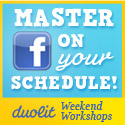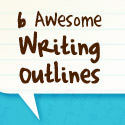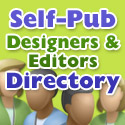Did dinosaurs and gazelles even exist at the same time? [Note: Turns out they did . Thanks Wikipedia.]
The Tortoise and The Hare…Sort Of
Picture a dinosaur and a gazelle, all decked out in their matching tracksuits for a footrace. Which would reach the finish line first? The hulking dinosaur (in his snazzy Juicy Couture pink-and-black getup) or the swift gazelle (in a modest Nike windbreaker and pants)? Would be able to better adapt to sudden obstacles, whether it’s a bump in the road or a meteor raining down from the sky? Which is still around today? Yup, you got it, the gazelle.
Well, it turns out dinosaurs are a lot like the publishing industry. Big, bulky, slow to change and maneuver. Luckily, you, as an author, are a gazelle. You have the power to choose your publishing direction, to dictate the look and feel of your book, which markets you reach out to, and how exactly you touch them. This is the power (and burden) of self-publishing.
To quote the article ‘Kindle Armageddon: How the Publishing Industry Is Slitting Its Own Throat‘ :
Once upon a time, the only books that existed were books copied by hand by monks and scribes and sold to the very rich for the equivalent of $5000 or $6000 a book. Then along came the printing press, and all the monks and scribes had to find another way to earn their bread.
Once upon a time the only books that existed were books on paper made by printing presses and sold to the rich and not so rich and not rich at all for enough money to make publishing houses worth hundreds of millions of dollars, enough money to pay high salaries to publishing executives. Then along came the digital book, and many thousands of people in and around publishing had to find another way to earn their bread.
The subtext of the story is the impact of technology on culture and commerce, and the unfailing collapse of any industry that allows itself to be blinded by sloth, short term greed, and general mediocrity of attitudes.
Don’t rely on the dude still listening to 8-tracks
Authors have always been around. Publishers have as well, in some form or fashion, but seem to be locked in a cycle, as the article says, of sloth, greed, mediocrity and unfailing collapse. Why leave the fate of the work on which you worked so hard in the hands of others? Why wait around while they attempt to catch up to technology? While getting published traditionally now may give you some short-term success, but what about the long-term? Published or not, it’s up to YOU to secure your place in the writing world for years to come.
Be a holographic digital music file (.hdm)
I don’t know what that is, either, but, who knows, it could be the next big thing to render mp3’s obsolete. Anyway, let’s not wait around for the publishing industry to turn around the Tianic and embrace the new digital age. Don’t even wait to hear back from all those query letters you sent – jump start your career now. Here’s a few steps and ideas to get you started:
- Decide if self-publishing is right for you. Learn a little about Shannon’s experience in self-publishing and decide (or let us help you decide) if that path is right for you. It’s definitely not for everyone; it puts a lot of the time, research and marketing burden on you, but it can also put you a step ahead of the countless numbers waiting around for publishers to notice their talent.
- Build your audience. Even if you don’t have a finished piece yet, start a blog! Post excerpts of what you’re writing or pieces you’ve written in the past. Sign up for a Twitter or Facebook account and get tips and inspiration from other writers like yourself.
- Connect. The biggest thing to keep in mind about the new social media landscape is that it’s not about one-way communication anymore. If you think about it, that’s kind of what traditional publishers are still doing. Engage your audience – ask them for their thoughts and opinion on your blog, Twitter, or Facebook and respond when they comment.
- Discuss more than yourself and your writing. Spread out your topics – share interesting links, discuss the day’s news stories, talk about what weird thing your dog did the other day — in other words, make yourself a real person. Readers, especially those that frequent social media are looking for a connection, something they can’t just get by reading your book.
- Never give up. Even though I haven’t experienced it personally, I’ve seen the struggles Shannon has gone through over the years with her writing– finding inspiration, completing a great novel, striving to get published. It would be easy to give up, to say that it’s not worth it, to stop updating your blog and cancelling your Twitter account — but don’t do it. If it gets to be overwhelming, take it one day at a time. Set a schedule that works for you and stick to it — and reach out to your audience! Sometimes they can be the ones that hold you accountable and keep you going.
Sometimes inspiration comes in the most unlikely of places, and perhaps this post will inspire you to outrun the dinosaur once and for all. If he wants you, make him chase you!
Now it’s your turn. What are you doing to further your writing career? What do you think about the traditional publishing industry? Are they still relavent? How will the rise of eBooks and self-publishing affect them? Talk back in the comments!


 We're
We're 








